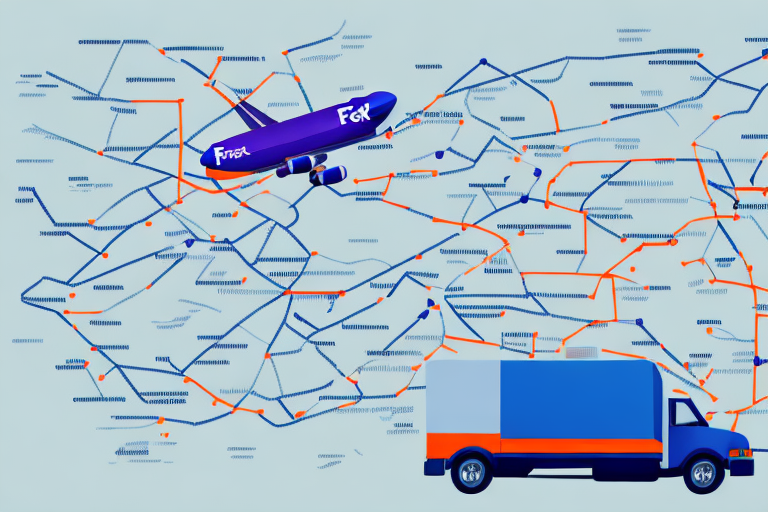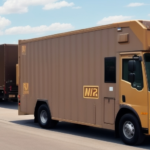Understanding FedEx Retail Shipping Rates
Shipping is a critical component for many businesses, especially those in the e-commerce sector. FedEx is one of the most renowned shipping companies globally, offering a diverse range of shipping options to meet the varied needs of its customers. Navigating FedEx's retail shipping rates can be challenging due to the multitude of options available. This comprehensive guide will help you understand FedEx retail shipping rates, including how to calculate them, factors that influence them, and actionable tips to save money while using FedEx retail shipping services.
How to Calculate FedEx Retail Shipping Rates
FedEx retail shipping rates are determined by several factors, including the destination of the package, its weight and dimensions, and the selected shipping option. Understanding how these variables impact the shipping rates can help you estimate the cost of sending your package accurately. FedEx offers online tools such as the FedEx Rate Finder and the FedEx Zone Locator to assist you in calculating your shipping fees effectively.
By inputting your package's destination, dimensions, and weight into these tools, you can obtain a precise estimate of your shipping costs. Additionally, the type of package can influence FedEx retail shipping rates. For instance, shipping fragile items that require special handling may incur extra fees. Similarly, shipping hazardous materials mandates compliance with specific regulations and may also involve additional charges.
Furthermore, FedEx offers discounts for certain customer categories, such as frequent shippers or those with large shipment volumes. If you belong to one of these categories, it's worthwhile to explore the available discounts to help reduce your shipping costs. You can contact FedEx customer service or your account representative to learn more about these discounts and how to apply them to your shipments.
The Factors that Affect FedEx Retail Shipping Rates
Several factors influence FedEx retail shipping rates, including:
- Package Weight and Dimensions: Heavier and larger packages typically cost more to ship than smaller and lighter ones.
- Shipping Distance: The farther the destination, the higher the shipping rates.
- Delivery Time: Faster shipping options, such as overnight or two-day delivery, are more expensive than standard shipping.
- Package Type: Fragile or hazardous items may require special handling and packaging, increasing the shipping cost.
- Seasonal Demand: Peak periods, like holidays, can affect FedEx shipping rates due to increased demand.
Moreover, choosing expedited or specialized delivery services, such as same-day or weekend delivery, can lead to higher shipping rates. It is essential to consider all these factors when selecting a shipping option to ensure you receive the best value for your money.
Tips to Save Money on FedEx Retail Shipping Rates
Implementing strategic measures can help you save money when using FedEx retail shipping services. Here are some effective tips:
- Compare Shipping Options: Evaluate different shipping methods and rates to find the most cost-effective solution that meets your needs.
- Use Flat-Rate Boxes: If your package is small and fits within a flat-rate box, you can take advantage of fixed shipping rates regardless of weight and destination.
- Proper Packaging: Pack your items correctly to meet FedEx's shipping requirements, avoiding additional fees or surcharges.
- Enroll in FedEx Rewards: Join FedEx's rewards program to access discounts and rewards for frequent shipping.
- Schedule Shipments in Advance: Pre-scheduling your shipments can qualify you for additional discounts.
- Third-Party Shipping Services: Utilize third-party services that can negotiate better rates with FedEx on your behalf.
By adopting these strategies, you can significantly reduce your shipping expenses while maintaining efficient delivery operations.
Understanding the Different FedEx Retail Shipping Options Available
FedEx offers a variety of shipping options tailored to different customer needs, including:
- Overnight Shipping: Guarantees next-business-day delivery by a specific time.
- 2-Day Shipping: Delivers packages within two business days.
- Standard Delivery: Provides ground shipping options with delivery in several business days.
- Same-Day Delivery: Offers same-day delivery services for urgent shipments.
- International Shipping: Includes international priority and economy services for shipping outside the United States.
When selecting a shipping option, it's crucial to calculate the associated costs and choose the most cost-effective method that aligns with your delivery requirements.
FedEx also provides comprehensive packaging services. Customers can purchase various packaging materials, such as boxes and envelopes, at FedEx retail locations to ensure their packages are adequately protected during transit. Additionally, FedEx offers professional packing services for an extra fee, where a FedEx employee will prepare and pack your shipment, ensuring it meets all necessary shipping standards.
How to Choose the Right Packaging for Your FedEx Retail Shipment
Selecting the appropriate packaging is vital when shipping items through FedEx retail services. Proper packaging ensures the safety and security of your items during transit. Here are key considerations for choosing the right packaging:
- Durability: Use sturdy boxes that can withstand handling during shipment to prevent damage.
- Size and Type: Select packaging that suits the size, weight, and dimensions of your items to optimize shipping costs.
- Protection: For fragile items, use additional cushioning materials like bubble wrap or packing peanuts to provide extra protection.
- Compliance: Ensure your packaging meets FedEx's requirements, especially for international shipments, to avoid delays or extra charges.
FedEx retail stores offer a variety of packaging supplies, including boxes, envelopes, and packing materials, to help you package your shipment appropriately. Investing in quality packaging is essential to maintain the integrity of your shipments and reduce the risk of damage or loss during transit.
Comparing FedEx Retail Shipping Rates with Other Carriers
Comparing FedEx retail shipping rates with other carriers can help you identify the most cost-effective shipping solution for your business needs. Factors to consider when comparing include:
- Shipping Costs: Analyze the rates offered by different carriers for similar shipping services.
- Delivery Speed: Consider the delivery times and whether they align with your business requirements.
- Reliability: Evaluate the carrier's track record for timely and accurate deliveries.
- Customer Service: Assess the quality of customer support provided by the carrier.
Using online shipping calculators or requesting quotes from multiple carriers can facilitate an effective comparison. Additionally, if you have a long-term relationship with a carrier or high shipment volumes, you may have negotiating power to secure discounted rates, potentially leading to significant savings.
While cost is an important factor, it's not the only consideration. Assess the overall value provided by each carrier, including reliability and customer service, to make an informed decision that best suits your business's unique needs.
Understanding the Insurance Options for Your FedEx Retail Shipment
FedEx retail shipping services offer various insurance options to protect your shipments against damage or loss during transit. Understanding these options is essential, especially when shipping valuable or fragile items. Here are the insurance options available:
- Declared Value: FedEx provides standard declared value coverage, which insures packages up to $100 per shipment at no additional cost.
- Additional Insurance: For higher-value items, you can purchase additional insurance to cover the full value of your shipment. The cost of additional insurance varies based on the shipment's value and destination.
To calculate the cost of additional insurance, use the FedEx shipping rate calculator. Properly packaging your items enhances their protection during transit, minimizing the risk of damage and the need for insurance claims. Utilize sturdy boxes, bubble wrap, and packing peanuts to safeguard your valuables effectively.
For more detailed information on FedEx insurance options, you can consult FedEx's official insurance page.
How to Track Your FedEx Retail Shipment
FedEx retail shipping services provide real-time tracking information for all shipments. By using the tracking number provided at the time of shipping, you can monitor your package's status and obtain estimated delivery times. Tracking your shipment allows for greater transparency and peace of mind, as you can identify any delays or issues promptly.
To track your FedEx shipment:
- Visit the FedEx Tracking Page.
- Enter your tracking number in the designated field.
- Click "Track" to view your package's current status and location.
Additionally, FedEx offers email and text notifications to keep you updated on your package's progress and estimated delivery time, ensuring you stay informed throughout the shipping process.
Common Mistakes to Avoid When Using FedEx Retail Shipping Services
To ensure a smooth and hassle-free shipping experience with FedEx retail shipping services, avoid the following common mistakes:
- Improper Packaging: Failing to package your shipment correctly can lead to damage, additional fees, or delivery delays. Always adhere to FedEx's packaging guidelines.
- Incorrect Weight and Measurements: Providing inaccurate package weight and dimensions can result in incorrect shipping rates or unforeseen charges. Use a reliable scale and measuring tools to ensure accuracy.
- Incomplete or Inaccurate Recipient Information: Ensure that the recipient's name, address, and contact details are correct to prevent delivery delays or undeliverable packages.
- Neglecting Shipping Regulations: If you're shipping internationally or hazardous materials, familiarize yourself with relevant regulations to avoid compliance issues.
By avoiding these mistakes, you can enhance the efficiency of your shipping processes and reduce the likelihood of encountering complications during transit.
Tips for International Shipping with FedEx Retail
International shipping introduces additional complexities compared to domestic shipments. To ensure a smooth and efficient experience when using FedEx retail services for international shipments, consider the following tips:
- Prepare All Necessary Customs Documentation: Accurate and complete customs forms are essential to prevent delays or additional fees. Ensure you provide detailed descriptions and correct values for all items.
- Understand Customs Regulations: Each country has its own set of customs regulations and restrictions. Research the specific requirements of the destination country to comply with their rules.
- Use Appropriate Packaging Materials: International shipments are subject to varying handling conditions. Utilize durable packaging materials to protect your items from potential damage during transit.
- Label Clearly: Ensure that all labels are clear and legible, including addresses and contact information, to facilitate smooth handling by customs and delivery personnel.
- Consider Delivery Times and Options: International shipping can vary significantly in delivery times. Choose the shipping option that best balances speed and cost for your specific needs.
By following these tips, you can mitigate the risks associated with international shipping and enhance the reliability of your overseas deliveries.
Understanding the Different Types of Fees Associated with FedEx Retail Shipping
When using FedEx retail shipping services, various fees may apply in addition to the base shipping rate. Understanding these fees is crucial to accurately estimate your total shipping costs. Key types of fees include:
- Fuel Surcharges: A variable fee applied to account for fluctuating fuel prices. This surcharge can significantly impact the overall shipping cost.
- Dimensional Weight Charges: Applied to packages based on their volume rather than their actual weight. For large, lightweight packages, dimensional weight can increase the shipping cost.
- Additional Handling Fees: Charged for special services or handling requirements, such as shipping hazardous materials or requiring signature confirmation upon delivery.
- Residential Delivery Fees: An extra charge for deliveries to residential addresses as opposed to commercial locations.
- Remote Area Surcharges: Applied when shipping to areas that are geographically remote or challenging to reach, increasing the cost due to logistical difficulties.
To avoid unexpected charges, it's important to factor in these additional fees when calculating your shipping rates. Reviewing FedEx's rate rules can provide a comprehensive understanding of the fees that may apply to your shipments.
Conclusion
Understanding FedEx retail shipping rates is essential for any business that requires reliable shipping services. By leveraging the various tools, tips, and strategies outlined in this guide, you can make informed decisions that align with your shipping needs while optimizing costs. Remember to compare different shipping options, choose appropriate packaging, and stay informed about the various fees associated with FedEx retail shipping services. Implementing these practices will enable you to achieve a smooth and cost-effective shipping experience that supports your business's operational requirements.




















